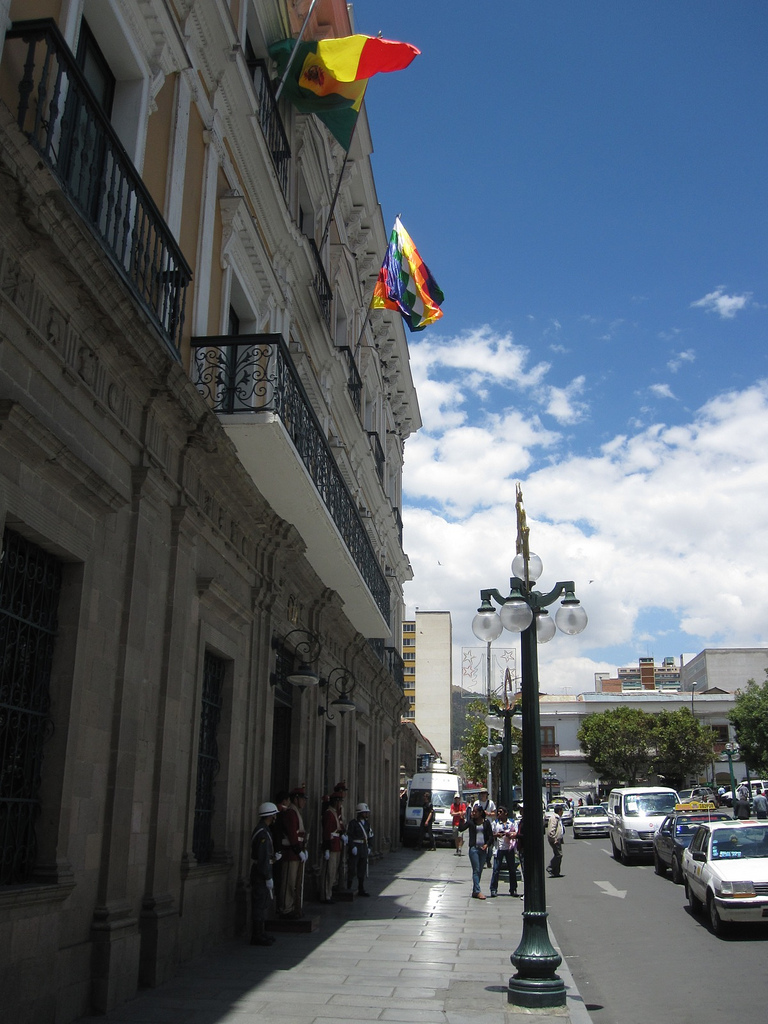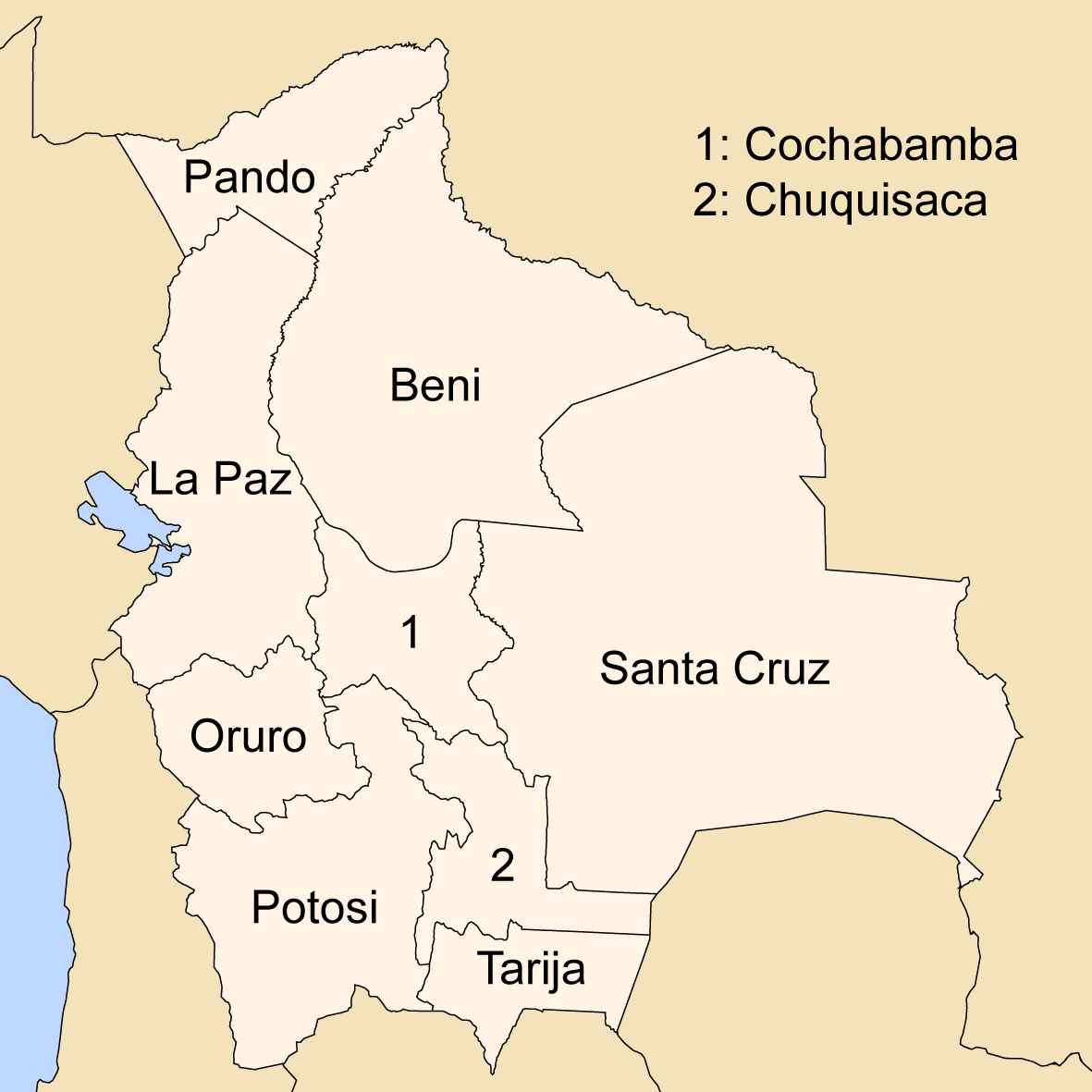|
Portugalete Canton
Portugalete Canton is one of the cantons of the Atocha Municipality, the second municipal section of the Sud Chichas Province in the Potosí Department in south-west Bolivia. Its seat is located at Portugalete. File:Tatasi.jpg, The village of Tatasi in Portugalete Canton Populated places * Escoriani - 2 inhabitants (2001) (21° 6′ S, 66° 8′ W) * Tatasi See also *Atocha Municipality
Atocha Municipality is the second municipal section of the Sud Chichas Province in the Potosí Department in Bolivia. Its seat is Atocha. It is located within the Andes mountain range.
Subdivision
Atocha M ...
[...More Info...] [...Related Items...] OR: [Wikipedia] [Google] [Baidu] |
Flag Of Bolivia
The flag of Bolivia is the national flag of the Plurinational State of Bolivia. It was originally adopted in 1851. The state and war flag is a horizontal tricolor of red, yellow and green with the Bolivian coat of arms in the center. According to one source, the red stands for Bolivia's brave soldiers, while the green symbolizes fertility and yellow the nation's mineral deposits. Since 2009 the Wiphala also holds the status of ''dual flag'' in the country. According to the revised Constitution of Bolivia of 2009, the Wiphala is considered a national symbol of Bolivia (along with the flag, national anthem, coat of arms, the cockade; kantuta flower and patujú flower). Despite its landlocked status, Bolivia has a naval ensign used by navy vessels on rivers and lakes. It consists of a blue field with the state flag in the canton bordered by nine small yellow five-pointed stars, with a larger yellow five-pointed star in the fly. The nine small stars represent the nine de ... [...More Info...] [...Related Items...] OR: [Wikipedia] [Google] [Baidu] |
Bolivia
, image_flag = Bandera de Bolivia (Estado).svg , flag_alt = Horizontal tricolor (red, yellow, and green from top to bottom) with the coat of arms of Bolivia in the center , flag_alt2 = 7 × 7 square patchwork with the (top left to bottom right) diagonals forming colored stripes (green, blue, purple, red, orange, yellow, white, green, blue, purple, red, orange, yellow, from top right to bottom left) , other_symbol = , other_symbol_type = Dual flag: , image_coat = Escudo de Bolivia.svg , national_anthem = " National Anthem of Bolivia" , image_map = BOL orthographic.svg , map_width = 220px , alt_map = , image_map2 = , alt_map2 = , map_caption = , capital = La Paz Sucre , largest_city = , official_languages = Spanish , languages_type = Co-official languages , languages ... [...More Info...] [...Related Items...] OR: [Wikipedia] [Google] [Baidu] |
Departments Of Bolivia
Bolivia is a unitary state consisting of nine departments ( es, departamentos). Departments are the primary subdivisions of Bolivia, and possess certain rights under the Constitution of Bolivia. Each department is represented in the Plurinational Legislative Assembly—a bicameral legislature consisting of the Senate and the Chamber of Deputies. Each department is represented by four Senators, while Deputies are awarded to each department in proportion to their total population. Out of the nine departments, La Paz was originally the most populous, with 2,706,351 inhabitants as of 2012 but the far eastern department of Santa Cruz has since surpassed it by 2020; Santa Cruz also claims the title as the largest, encompassing . Pando is the least populated, with a population of 110,436. The smallest in area is Tarija, encompassing . Departments Former Departments By population Notes See also * ISO 3166-2:BO, the ISO codes for the departments of Bolivia. * Boliv ... [...More Info...] [...Related Items...] OR: [Wikipedia] [Google] [Baidu] |
Potosí Department
Potosí (; Aymara: ''Putusi''; qu, P'utuqsi) is a department in southwestern Bolivia. It comprises 118,218 km2 with 823,517 inhabitants (2012 census). The capital is the city of Potosí. It is mostly a barren, mountainous region with one large plateau to the west, where the largest salt flat in the world, Salar de Uyuni, is located. Cerro Potosí was the richest province in the Spanish empire, providing a great percentage of the silver that was shipped to Europe. Potosi is also the location of the San Cristóbal silver, zinc and lead mines, developed by the US-company Apex Silver Mines Limited of Colorado and in November 2008 sold to the Japanese Sumitomo Corporation. Government The chief executive office of Bolivia departments (since May 2010) is the governor; until then, the office was called the prefect, and until 2006 the prefect was appointed by the President of Bolivia. The current governor, Esteban Urquizu Cuéllar of the Movement for Socialism – Political I ... [...More Info...] [...Related Items...] OR: [Wikipedia] [Google] [Baidu] |
Provinces Of Bolivia
A province is the second largest administrative division in Bolivia, after a department. Each department is divided into provinces. There are 112 provinces. The country's provinces are further divided into 337 municipalities which are administered by an alcalde and municipal council. List of provinces Beni Department Chuquisaca Department Cochabamba Department La Paz Department Oruro Department Pando Department Potosí Department Santa Cruz Department Tarija Department See also * Departments of Bolivia Bolivia is a unitary state consisting of nine departments ( es, departamentos). Departments are the primary subdivisions of Bolivia, and possess certain rights under the Constitution of Bolivia. Each department is represented in the Plurinatio ... * Municipalities of Bolivia Sources Instituto Nacional de Estadística - Bolivia(Spanish) {{Articles on second-level administrative divisions of South American countries S ... [...More Info...] [...Related Items...] OR: [Wikipedia] [Google] [Baidu] |
Sud Chichas Province
Sud Chichas (or: ''Sur Chichas'') is a province in the Bolivian department of Potosí. Its seat is Tupiza. Location Sud Chichas province is one of sixteen provinces in the Potosí Department. It is located between 20° 51' and 21° 50' South and between 65° 15' and 66° 30' West. It borders Nor Chichas Province in the north, Antonio Quijarro Province in the north-west, Nor Lípez Province and Sur Lípez Province in the west, the Republic of Argentina and Modesto Omiste Province in the south, Tarija Department in the south-east, and Chuquisaca Department in the east. The province extends over 130 km from east to west and from north to south. Division The province comprises two municipalities which are further subdivided into cantons A canton is a type of administrative division of a country. In general, cantons are relatively small in terms of area and population when compared with other administrative divisions such as counties, departments, or provinces. Inter ... [...More Info...] [...Related Items...] OR: [Wikipedia] [Google] [Baidu] |
Municipalities Of Bolivia
Municipalities in Bolivia are administrative divisions of the entire national territory governed by local elections. Municipalities are the third level of administrative divisions, below departments and provinces. Some of the provinces consist of only one municipality. In these cases the municipalities are identical to the provinces they belong to. History of governance Municipalities in Bolivia are each led by a mayor, an executive office. Mayors were appointed by the national government from 1878 to 1942 and from 1949 to 1987. Local elections were held under the 1942 municipal code, which was in force until 1991. The 1985 Organic Law of Municipalities restored local elections for mayor and created a legislative body, the municipal council. In 1994, the entire territory of Bolivia was merged into municipalities, where previously only urban areas were organized as municipalities. As an effect of decentralization through the 1994 Law of Popular Participation the number of munic ... [...More Info...] [...Related Items...] OR: [Wikipedia] [Google] [Baidu] |
Atocha Municipality
Atocha Municipality is the second municipal section of the Sud Chichas Province in the Potosí Department in Bolivia. Its seat is Atocha. It is located within the Andes mountain range. Subdivision Atocha Municipality was created on September 21, 1963 by Law No. 245 consisting of the following seven cantons: Chocaya, Portugalete, San Vicente, Santa Bárbara, Tacmari, Guadalupe and Chorolque Viejo. The National Institute of Statistics of Bolivia INE lists eight divisions of the municipality of Atocha: Atocha, Chorolque, Chorolque Viejo, Portugalete, Chocaya, Guadalupe, San Vicente, Santa Bárbara. The people The people are predominantly indigenous citizens of Quechua descent.obd.descentralizacion.gov.bo/municipal/fichas/ obd.descentralizacion.gov.bo Languages The languages spoken in the municipality are mainly Spanish and Quechua . Ref: obd.descentralizacion.gov.bo Places of interest The colonial settlement ''Atocha Viejo'' ("Old Atocha") as well as the la ... [...More Info...] [...Related Items...] OR: [Wikipedia] [Google] [Baidu] |
Quechua People
Quechua people (, ; ) or Quichua people, may refer to any of the aboriginal people of South America who speak the Quechua languages, which originated among the Indigenous people of Peru. Although most Quechua speakers are native to Peru, there are some significant populations in Ecuador, Bolivia, Chile, Colombia, and Argentina. The most common Quechua dialect is Southern Quechua. The Kichwa people of Ecuador speak the Kichwa dialect; in Colombia, the Inga people speak Inga Kichwa. The Quechua word for a Quechua speaker is ''runa'' or ''nuna'' ("person"); the plural is ''runakuna'' or ''nunakuna'' ("people"). "Quechua speakers call themselves Runa -- simply translated, 'the people.'" Some historical Quechua people are: * The Chanka people, who lived in the Huancavelica, Ayacucho, and Apurímac regions of Peru. * The Huanca people of the Junín Region of Peru, who spoke Quechua before the Incas did. * The Inca, who established the largest empire of the pre-Columbi ... [...More Info...] [...Related Items...] OR: [Wikipedia] [Google] [Baidu] |
:Category:Municipalities Of Bolivia ...
{{Cat main, Municipalities of Bolivia Subdivisions of Bolivia Bolivia Bolivia Bolivia , image_flag = Bandera de Bolivia (Estado).svg , flag_alt = Horizontal tricolor (red, yellow, and green from top to bottom) with the coat of arms of Bolivia in the center , flag_alt2 = 7 × 7 square p ... [...More Info...] [...Related Items...] OR: [Wikipedia] [Google] [Baidu] |
Tatasi
Tatasi is a small town in Bolivia in the Potosí Department, in Sud Chichas Province, Atocha Municipality. It is situated at the Tatasi River and located at the foothills of the Cordillera de Lípez. Location Tatasi is the most populous settlement in the Canton (country subdivision), canton of Portugalete and lies in the district (''Bolivian'' : Municipio) Atocha in the province of Sur Chichas. The village is located at an altitude of 4065m in a high mountain depression on the irregularly flowing Tatasi River, Río Tatasi'','' one of the source rivers of the Tupiza River, Río Tupiza. Tatasi is framed by ridges that rise to an altitude of 4,460 meters, surrounding the town almost entirely. Almost three kilometers west of Tatasi is the uninhabited ghost village of Portugalete and the mining colony at the Tatasi-Portugalete Mine, which were abandoned in the 19th century after the silver mines there were exhausted and the mining colonies there moved on. Geography Tatasi is locate ... [...More Info...] [...Related Items...] OR: [Wikipedia] [Google] [Baidu] |
Cantons Of Potosí Department
A canton is a type of administrative division of a country. In general, cantons are relatively small in terms of area and population when compared with other administrative divisions such as counties, departments, or provinces. Internationally, the most politically important cantons are the Swiss cantons. As the constituents of the Swiss Confederation, theoretically and historically, they are semi-sovereign states. The term is derived from the French word ''canton'', meaning "corner" or "district" (from which "cantonment" is also derived). In specific countries Cantons exist or previously existed in the following countries: *Cantons of Belgium * Cantonal Government of Bohol *Cantons of Bolivia *Cantons of Bosnia and Herzegovina: federal units of the Federation of Bosnia and Herzegovina *Canada: Canadian French equivalent for the English word "township", since the translation ''municipalité'' is already used for a different level of government (see township). ** Cantons of Queb ... [...More Info...] [...Related Items...] OR: [Wikipedia] [Google] [Baidu] |




